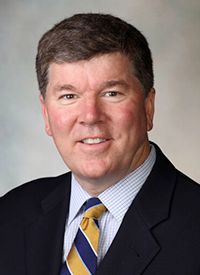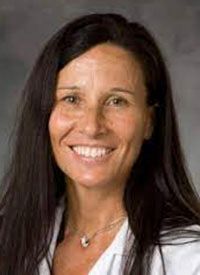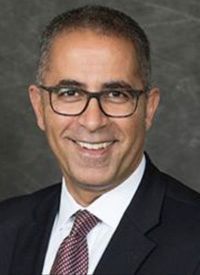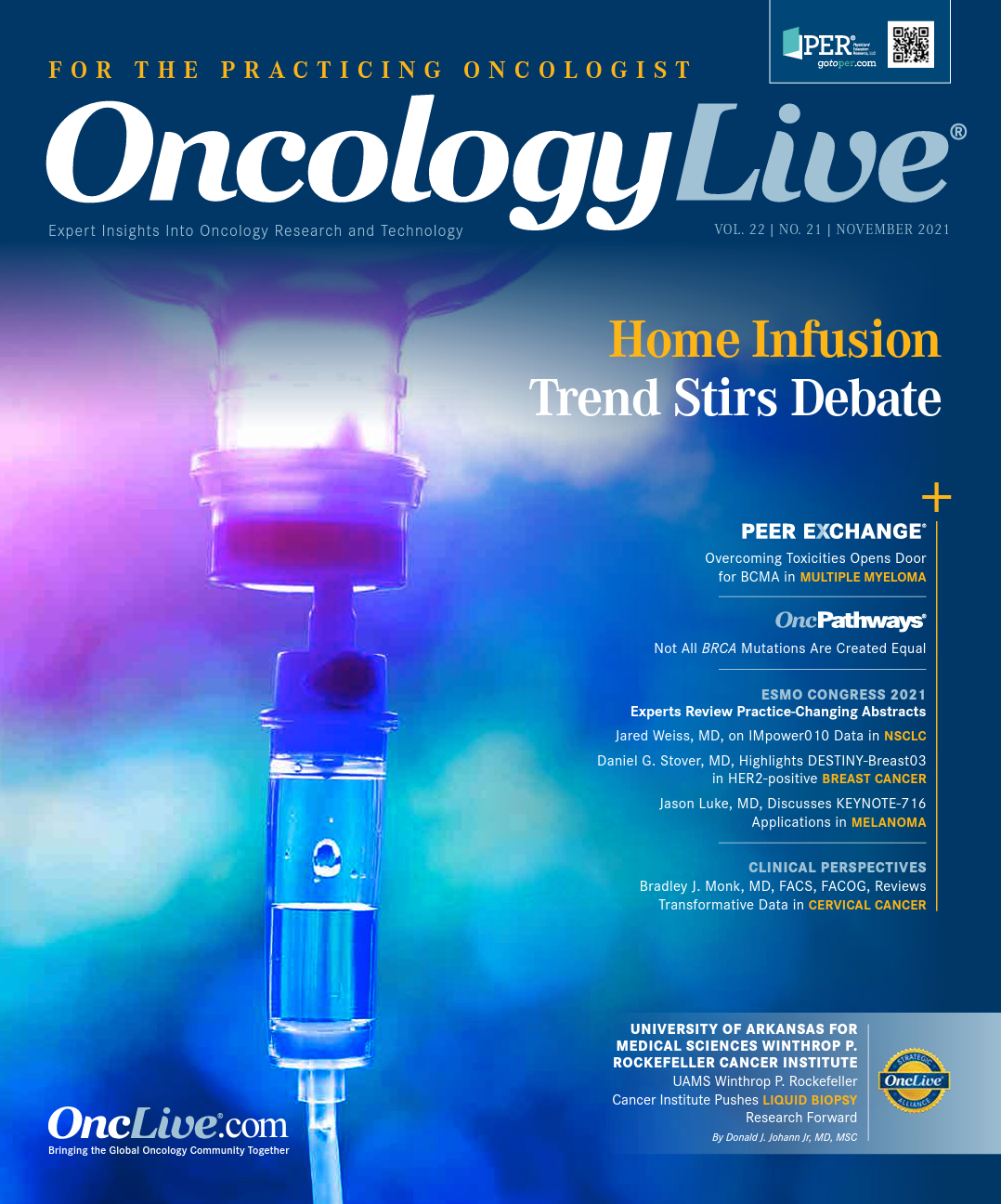Mitigating Toxicities Will Position BCMA for Role in Triple-Class Refractory Multiple Myeloma
In a recent OncLive Peer Exchange® program, an expert panel of oncologic hematologists discussed the latest developments and future of BCMA in multiple myeloma.
Keith Stewart, MB, ChB

Defining pharmacologic treatment strategies for patients with multiple myeloma whose disease becomes refractory to standard-of-care treatment options presents a challenge for investigators. Specifically, efforts to develop treatment strategies for patients whose disease becomes triple-class refractory—failing treatment with proteasome inhibitors, immunomodulatory agents, and anti-CD38 monoclonal antibodies— have become a key clinical research priority.
Novel treatment strategies have begun to fill the sparse treatment landscape for this population, adding greater benefit than that seen with standard treatment options including salvage autologous stem cell transplant, chemotherapy, and recycling prior therapeutic regimens.1 One area of active development is the development of therapeutic regimens targeting B-cell maturation antigen (BCMA).
In a recent OncLive Peer Exchange® program, an expert panel of oncologic hematologists discussed the latest developments and future of BCMA in multiple myeloma, which moderator Keith Stewart, MB ChB, MBA, said is “the most exciting area in myeloma research.” In addition to the various strategies making headway in the triple-class refractory setting, the panelists gave their insights on the risk/benefit ratio of the BCMA-targeted therapeutic options, including management of common treatment-related adverse effects (AEs).
Nina Shah, MD

BCMA Sparks Therapeutic Development
A member of the tumor necrosis factor receptor superfamily, BCMA is highly expressed on malignant plasma cells in patients with multiple myeloma and is notably absent from normal human tissue.2,3 Early investigative efforts demonstrated that T cells engineered to target BCMA were able to recognize primary multiple myeloma cells, providing a rationale to explore the target to eradicate residual disease in patients who experience relapse.2
Targeting BCMA has shifted the development of chimeric antigen receptor (CAR) T-cell therapies for patients with relapsed or refractory multiple myeloma. In March 2021, the FDA approved the BCMA-directed CAR T-cell therapy idecabtagene vicleucel (ide-cel; Abecma) for the treatment of adult patients with relapsed or refractory multiple myeloma following 4 or more prior lines of therapy, including an immunomodulatory agent, a proteasome inhibitor, and an anti-CD38 monoclonal antibody.4 The approval was based on data from the phase 2 KarMMa study (NCT03361748), which enrolled patients who had received at least 3 prior lines of therapy. Results showed that treatment with the cellular therapy demonstrated a favorable benefit-risk profile regardless of the number of prior lines of therapy in this patient population.
Updated data for the 128 patients who received treatment at 150-450 × 106 CAR-positive T cells were presented at the 2021 American Society for Clinical Oncology Annual Meeting.5 The overall response rate (ORR) was 73%, comprising a complete response rate of 33%, a very good partial response (VGPR) rate of 20%, and a partial response rate of 20%. The median progression-free survival (PFS) for all treated patients was 8.6 months and the median overall survival (OS) was 24.8 months. Among the 94 responders the median duration of response was 10.9 months (95% CI, 9.0-11.4), and 21.5 months (95% CI, 12.5-not estimable) for those who achieved a complete or stringent complete response (sCR).
“[Ide-cel] is the first approved product [and] there are others coming down the line,” Nina Shah, MD, said. “We’re hoping to see how we might be able to transition this from a research thing, a boutique [option], to a standard of care, much like our lymphoma colleagues were able to do.”
In terms of safety, an analysis of neurotoxicity from the KarMMa study detailed the incidence of events such as cytokine release syndrome (CRS).6 In total, 84% of treated patients had at least 1 CRS event, 78% of which were grade 1 or 2; no grade 4 or 5 events occured.5,6 The median time to onset was similar regardless of grade, and investigators reported that patients who experienced neurotoxicity achieved frequent and deep responses with therapy.
Cristina Gasparetto, MD

According to Cristina Gasparetto, MD, investigators have learned more about CRS and other neurotoxicity events associated with CAR T-cell therapy and, as such, management of them has become routine in the standard of care. “A majority of patients will develop CRS and we have learned how to manage this type of toxicity over the past few years. If you look the toxicity profile, we don’t see a lot of the grade 3 and 4 [events]. It’s more manageable with the tocilizumab [Actemra] intervention,” she said.
Other BCMA-directed CAR T-cell therapies are in development and under review at the FDA, including ciltacabtagene autoleucel (cilta-cel). In results from the 1b/2 CARTITUDE-1 trial (NCT03548207), cilta-cel elicited early, deep, and durable responses with a manageable safety profile in heavily pretreated patients with multiple myeloma.7 The agent received a priority review designation from the FDA in early 2021.8
Specifically, at a median follow-up of 18 months, the ORR was 97.9%, with an sCR rate of 80.4%, a VGPR rate or better of 94.8%, and a partial response rate of 3.1% among 97 treated patients. In terms of safety, 94.8% of patients experienced a CRS event; the median time to onset was 7 days (range, 1-12) and the median duration was 4 days (range, 1-97). Most of these cases were grades 1 or 2 in severity (94.6%) and most were resolved within 14 days of onset (98.9%).7
Further, investigators of the phase 2 CARTITUDE-2 study (NCT04133636) evaluated cilta-cel in patients who had received 1 to 3 prior lines of therapy and were refractory to lenalidomide (Revlimid). Among 20 patients who received treatment with a target dose of cilta-cel at 0.75 × 106/kg, elicited in an ORR of 95% (95% CI, 75%-100%) was elicited, with an sCR rate of 75% (95% CI, 51%-91%) and a VGPR rate or better of 85% (95% CI, 62%-97%). The median time to CRS onset was 7 days (range, 5-9) and the incidence of neurotoxicity was 20%, with all events reported at grade 1 or 2.9
Joseph Mikhael, MD, MEd, FRCPC, FACP

“Although the process of cellular therapy remains long, [and involves] a patient having their T cells collected and weeks to do manufacturing, it’s becoming considerably safer,” Joseph Mikhael, MD, said. “Unfortunately, I remember some of the earliest CAR T trials in myeloma, where a significant fraction of patients had real, very significant toxicity and even death. We have groups around the world now that are convening to enhance our management of CRS, of the neurological toxicities that can emerge,” he said.
An emerging BCMA-directed allogeneic CAR T-cell therapy, ALLO-715, has demonstrated activity in data from the phase 1 UNIVERSAL study (NCT04093596) and may provide a faster and safer course of treatment for Joseph Mikhael, MD patients with triple-refractory disease.10 The “off-the-shelf” product administered at a dose of 320 × 106 CAR cells dose plus an ALLO-647 lymphodepletion regimen elicited an ORR of 60% (95% CI, 14.7%-94.7%) among 10 patients. This included a VGPR rate or better in 40% of patients. In August, the FDA granted an orphan drug designation to ALLO-715.11
BCMA Monoclonal Antibodies
In August 2020, the FDA granted accelerated approval to the BCMA-targeted monoclonal antibody belantamab mafodotin-blmf (Blenrep) for the treatment of adults with relapsed or refractory multiple myeloma who have received at least 4 prior therapies. These include an anti-CD38 monoclonal antibody, a proteasome inhibitor, and an immunomodulatory agent.12
The approval was based on results of the phase 2 DREAMM 2 trial (NCT03525678). The agent administered intravenously once every 3 weeks at a dose of 2.5 mg/kg, elicited an ORR of 31% (95% CI, 21%-43%) among 97 treated patients.13
In a 13-month follow-up of the trial, investigators reported that 32% (97.5% CI, 21.7%-43.6%) of patients had achieved an overall response and that previously reported responses deepened over time in some patients. Specifically, 12 responders who initially had a partial response or better subsequently experienced a deeper response to treatment.14
Of the 31 responders, 58% had achieved a VGPR or better with 7 patients having an sCR or a complete response. A minimal response or better was reported in 35 of 97 patients for a clinical benefit of 36%. Patients received a median of 3 treatment cycles (range, 1-17). The median PFS was 2.8 months (95% CI, 1.6-3.6) and the median OS was 13.7 months (95% CI, 9.9-not reached), with an estimated 1-year survival probability of 58% (95% CI, 47%-67%).14
In terms of safety, the panel elucidated the ocular toxicities associated with the agent, specifically those included in the box warning for corneal epithelium. These may result in changes in vision, including severe vision loss and corneal ulcer, and symptoms such as blurred vision and dry eyes.13 In the updated analysis, investigators reported that 68 patients experienced keratopathy and that the first reported finding was by treatment cycle 4 for 66 patients. The median time to onset of the first keratopathy was 37 days (range, 19-143).14
Data for 60 patients were available in the analysis, which showed that 77% of patients who experienced grade 2 or higher keratopathy recovered to baseline and 48% recovered from their last event. The median time to recovery from the first examination finding was 86.5 days (range, 8-358).
“The full mechanism [of belantamab mafodotin] is still to be elucidated,” Mikhael said. “We think [ocular toxicity] has to do with the conjugate that is part of the drug; it has the BCMA antibody and that toxin gets dropped in and incorporated into the cell.”
Prior to receiving treatment, Mikhael noted that “what [patients must do] at baseline before their first dose, and before the doses are scheduled every 3 weeks, [is] see either an ophthalmologist or an optometrist, an eye specialist, to do 2 things: check their visual acuity and [undergo] the slit lamp exam to look for evidence of keratopathy. And if they have grade 1 keratopathy or below, we can proceed [with treatment].” He added that if keratopathy worsens there must be a delay in the treatment. “It’s a bit of a logistical challenge, but feasible and doable, and a significant fraction of individuals who had to delay doses because of keratopathy were still able to continue therapy.”
Gasparetto agreed, noting that she does not feel comfortable proceeding with the agent without an ophthalmology exam. Even with dose reductions or interruptions the agent appears to be effective. “I like the fact that the majority of the responders, even if they miss a few doses, maintain the response,” she said. “That was very interesting, and what I think is going to be the key [in] mitigating the toxicity.”
Just as with CAR therapy, Mikhael added, “We’re getting more and more familiar using these agents and we will optimize them with time. I personally, without going out too far on the limb, think that the dosing of this drug may be more effective less frequently, and patients will potentially have less keratopathy, but we have to do the studies to show that.”

Parsing a Crowded Landscape
As more agents enter the treatment landscape and testing patients for BCMA becomes a standard practice, deciding between available therapies presents a new challenge. Stewart asked the panel which treatment, if given the choice between the 2 approved therapies, would they recommend for a patient who is triple-class refractory—belantamab mafodotin or ide-cel.
Mikhael said he would discuss the options with patients and that understanding their preference as well as the safety considerations for each therapy would play a role in the process (Figure4,13). “To me, you sort of go through the potential risks and benefits of each of the 2 treatments and lay them out for the patient,” he said. “There are patients who say, ‘I don’t want to go in the hospital for whatever you’re going to do to me,’ and that takes CAR T-cell therapy off the table. You describe CRS to them, even though it’s mild in most patients, and they don’t want to be put at risk. Then there are other patients for whom any concern about loss of the ability to read or to drive is a deal breaker. For them, [belantamab mafodotin] is not necessarily going to be the right answer either.”
Shah agreed, adding that she prefers to offer CAR T-cell therapy to these patients, but that support systems and the opportunity to present a patient with this option play a role in the decision-making process. “If the patient has support and desires to come to the center, I would pick CAR T-cell therapy because it’s a ‘1 and done’ treatment and does have a higher ORR and, at this time, a higher PFS,” she said.
CAR therapies and belantamab mafodotin are 2 options facing scrutiny in practice; however, another method of targeting BCMA is under active investigation in the trials. Bispecific T-cell engagers (BiTEs) are engineered to target BCMA and CD3, redirecting T cells to multiple myeloma cells (Table).15-17 Early response data for heavily pretreated patients are promising, and Gasparetto said it will be “interesting over the next year or so to see how we can sequence these agents.”

Stewart noted that BiTEs may present a unique opportunity for patients for whom CAR therapy is either not available or for whom treatment presents a logistical challenge. “[Data for the] 4 or 5 patients are very impressive and they’ve all got a 60% to 70% response rate; it’s hard to tell the difference between them,” he said. “If I was in the community, this is attractive. I can probably treat [them] in my local hospital for a couple of days to watch for CRS and then treat these patients at home. Why would I [send them] to get CAR T-cell therapy if I have these [agents] available?”
Shah said that in the hypothetical scenario she would still prefer that a patient undergo CAR T-cell therapy; however, each patient presents a unique case and should be assessed based on their fitness, age, comorbidities, and prior therapies. “Not all myeloma patients are the same; as I always say, there’s enough myeloma to go around,” Shah said. “If [CAR therapy is] not possible, then I think bispecifics are a reasonable option.”
“BCMA therapies are here to stay,” Stewart concluded. “They’re very exciting and I think they’re going to really create a paradigm shift in how we treat myeloma. For example, I wouldn’t be surprised if BiTEs targeting BCMA become part of our frontline regimens in the not-too-distant future. For now, these are still in clinical trials, but I think many of your academic centers will have these available.”
References
- Mikhael J. Treatment options for triple-class refractory multiple myeloma. Clin Lymphoma Myeloma Leuk. 2020;20(1):1-7. doi:10.1016/j.clml.2019.09.621
- Carpenter RO, Evbuomwan MO, Pittaluga S, et al. B-cell maturation antigen is a promising target for adoptive T-cell therapy of multiple myeloma. Clin Cancer Res. 2013;19(8):2048-2060. doi:10.1158/1078-0432.CCR-12-2422
- Tai YT, Anderson KC. Targeting B-cell maturation antigen in multiple myeloma. Immunotherapy. 2015;7(11):1187-1199. doi:10.2217/imt.15.77
- FDA approves idecabtagene vicleucel for multiple myeloma. FDA. Updated March 29, 2021. Accessed October 15, 2021. bit.ly/3G0UVRp
- Anderson LD Jr, Munshi NC, Shah N, et al; KarMMa Study Investigators. Idecabtagene vicleucel (ide-cel, bb2121), a BCMA-directed CAR T cell therapy, in relapsed and refractory multiple myeloma: updated KarMMa results. J Clin Oncol. 2021;39(suppl 15):8016. doi:10.1200/JCO.2021.39.15_ suppl.8016
- Manier S, Kansagra AK, Andersonn LD Jr, et al; KarMMa Study Investigators. Characteristics of neurotoxicity associated with idecabtagene vicleucel (ide-cel, bb2121) in patients with relapsed and refractory multiple myeloma (RRMM) in the pivotal phase II KarMMa study. J Clin Oncol. 2021;39(suppl 15):8036. doi:10.1200/JCO.2021.39.15_suppl.8036
- Usmani S, Berdeja JG, Madduri D, et al. Updated results of ciltacabtagene autoleucel (cilta-cel), a B-cell maturation antigen (BCMA)-directed chimeric antigen receptor T (CAR-T) cell therapy in relapsed/refractory multiple myeloma (RRMM). Presented at: 2021 Society of Hematologic Oncology Annual Meeting; September 8-11, 2021; Virtual. Abstract MM-119.
- U.S. Food and Drug Administration grants BCMA CAR-T cilta-cel priority review for the treatment for relapsed/refractory multiple myeloma. News release. Legend Biotech Corporation; May 26, 2021. Accessed October 15, 2021. bwnews.pr/3bYeEUj
- Agha ME, Cohen AD, Madduri D, et al. CARTITUDE-2: efficacy and safety of ciltacabtagene autoleucel (cilta-cel), a BCMA-directed CAR T-cell therapy, in patients with progressive multiple myeloma (MM) after one to three prior lines of therapy. J Clin Oncol. 2021;39(suppl 15):8013. doi:10.1200/JCO.2021.39.15_ suppl.8013
- Mailankody S, Matous JV, Liedtke M, et al. Universal: an allogeneic first-in-human study of the anti-Bcma ALLO-715 and the Anti-CD52 ALLO-647 in relapsed/refractory multiple myeloma. Blood. 2020;136(suppl 1):24-25. doi:10.1182/ blood-2020-140641
- Allogene Therapeutics receives FDA orphan drug designation (ODD) for ALLO-715 for the treatment of multiple myeloma (MM). News release. Allogene Therapeutics Inc; August 12, 2021. Accessed October 20, 2021. bit.ly/3aWk9Cb
- FDA granted accelerated approval to belantamab mafodotin-blmf for multiple myeloma. FDA. Updated August 6, 2021. Accessed October 15, 2021. bit.ly/3BUehFp
- Blenrep. Prescribing information. GlaxoSmithKline; 2020. Accessed October 15, 2021. bit.ly/3jgJaMN
- Lonial S, Lee HC, Badros A, et al. Longer term outcomes with single-agent belantamab mafodotin in patients with relapsed or refractory multiple myeloma: 13-month follow-up from the pivotal DREAMM-2 study. Cancer. Published online July 27, 2021. doi:10.1002/cncr.33809
- Usmani SZ, Garfall AL, van de Donk NWC, et al. Teclistamab, a B-cell maturation antigen × CD3 bispecific antibody, in patients with relapsed or refractory multiple myeloma (MajesTEC-1): a multicentre, open-label, single-arm, phase 1 study. Lancet. 2021;398(10301):665-674. doi:10.1016/S01406736(21)01338-6
- Bahlis NJ, Raje NS, Costello C, et al. Efficacy and safety of elranatamab (PF-06863135), a B-cell maturation antigen (BCMA)-CD3 bispecific antibody, in patients with relapsed or refractory multiple myeloma (MM). J Clin Oncol. 2021;39(suppl 15):8006. doi:10.1200/JCO.2021.39.15_suppl.8006
- Moshe LY, Bahlis NJ, Raje NS, et al. MagnetisMM-1: a study of elranatamab (PF-06863135), a B-cell maturation antigen (BCMA)-targeted, CD3-engaging bispecific antibody, for patients with relapsed or refractory multiple myeloma (MM). Presented at: 2021 Society of Hematologic Oncology Annual Meeting; September 8-11, 2021; Virtual. Abstract MM-379.




